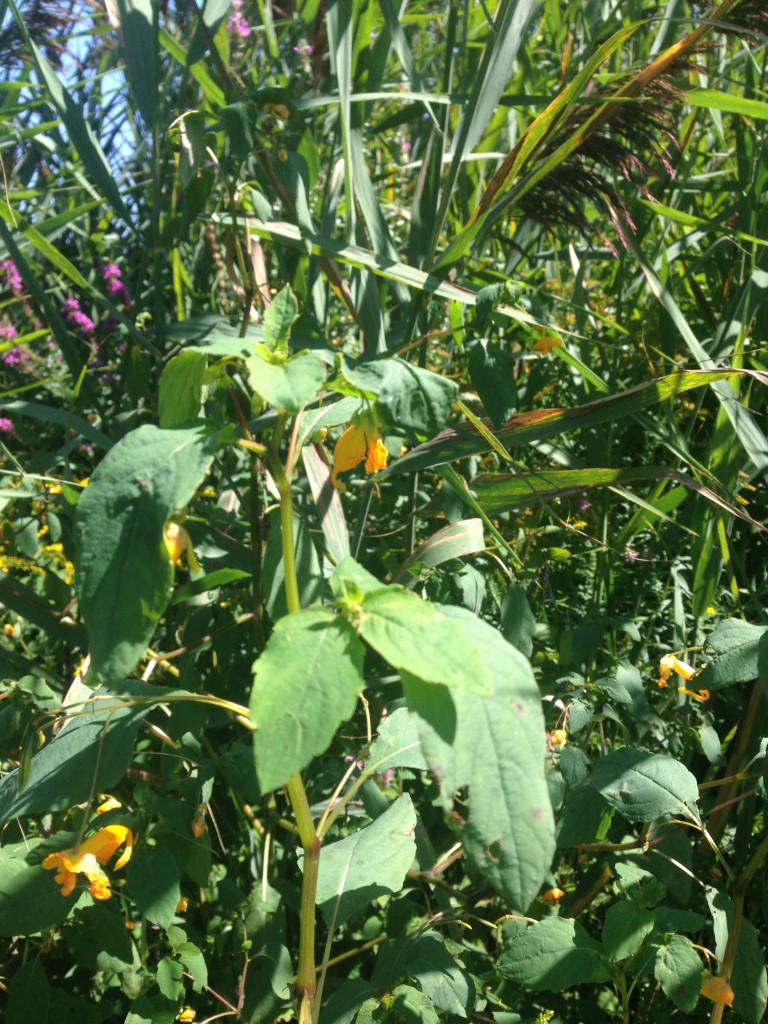Fall is a time of interesting edges. Native plants like yarrow and the goldenrods sway next to asters in the areas between forest and meadow, or meadow and parkinglot. One common plant is jewelweed, Impatiens capensis, also called “touch me not”. Jewelweed is known for its bright orange flowers, bright orange sap, and its seed capsules that spring open when touched. The name “jewel weed” may come from the fact that its leaves look silvery under water although some attribute it to the large blossoms, which hang like pendants.
In my own experience, there are plants that are perfectly lovely, but are never noticed, because we consider them weeds. Jewelweed may seem like a weed to us, because it is found in areas such as ditches. However, it is a valuable source of food for pollinators, being adapted to pollination by hummingbirds. It is especially important to the Ruby Throated Hummingbird, but it is also pollinated by other animals such as bees and butterflies. It is also quite pretty, forming dense stands up to five feet high with orange blossoms that emerge for weeks in late summer and early fall. You can even buy jewelweed seeds, although it is an annual and less likely to be used in landscaping than perennials would be.
Like many of the native plants in our area, jewelweed has been used for medicinal purposes. Its sap is rumored to help with poison ivy and nettle rashes, and it is possible it was used that way by native Americans, although the actual efficacy of jewelweed for that particular purpose isn’t well known. Its effectiveness as a fungicide and usefulness at killing infections such as athlete’s foot has been verified in scientific studies. There is some contradictory information in the literature about whether you can eat it. Some sources say – “cut up and fry those greens,” and others say- “nope, you’ll get sick.” Most seem to suggest that you should not eat the seed pods and that children will suffer the most from ingestion.
So break open that stem and spread goo on your skin and you’ll be fine, but stay away from eating it unless you know a lot more about it than any of sources of information I have. Enjoy the fall, as you walk near the woods and hear the popping of jewelweed spreading seeds, and a bit of joy, in late September.


I’m delighted to see your post. This past spring I found myself in conversation with a woman at my exercise class who was fretting about how much time she’d spent pulling up jewelweed. She surely thought I was mad when I reported that I encourage it to multiply for the benefit and pure pleasure of watching the ruby-throated hummingbirds sipping its nectar in September. This year’s resident female set up a resting station in an alder branch and went from our feeder to the jewelweed repeatedly for three weeks. I am sad that she seems to have left on her migration earlier this week. But she went fat and, hopefully, prepared.